
7 minute read
Ama Composites
Extraordinary solutions
Super performance, super insulation, super light weight: Ama Composites’s objective is to introduce unconventional materials and technologies, often derived from the automotive and aerospace industries, into the RV industry, to improve the performance and styling of motorhomes and campervans, while lowering the cost and weight of the finished product and increasing its quality
Words Renato Antonini, photo Enrico Bona
Ama Composites is continuing to develop the strategy launched a few years ago, with the ambitious objective of bringing automotive technologies and materials into the RV sector. Thanks to the support of the company headquartered in Northern Italy, the objective is completely achievable and RV makers can now improve their products in a variety of ways. “We entered the RV sector in 2006 with the launch of the LWRT technology (Light Weight Reinforced Thermoplastic),” says Marco Corradini, CEO of Ama Composites, “an innovative technology that remains the cornerstone of our production. This technology enables us to create entire parts of motorhomes, campervans and caravans, while offering light weight, dimensional stability and outstanding aesthetic quality. The technology has been in use in the automotive sector for some time now, first in the USA and later in Europe. Our aim has been to make the excellent results it offers available to the RV sector. We took the first step in this direction in 2006, when we designed and fabricated the overcab molding of Trigano’s CI Mizar and Roller Team Pegaso models for the company’s Italian division, including the internal panelling in LWRT, which resulted in our recognition as best quality vendor in 2006.” Ama Composites now has a well-established client base in Europe and is looking to introduce the LWRT technology in America as well. LWRT technology has been used for car interior trims in the US for some time now, but it has not yet been adopted by RV makers. Ama Composites is thus offering concrete proposals to North American RV manufacturers, specifically for the fabrication of large components. But such an ambitious project demands a local production facility. The company has set up a business unit in Indianapolis, which is already manufacturing seats and steering wheels for off-highway vehicles, with a view to starting up production of LWRT panels for the RV sector and low volume car manufacturers.
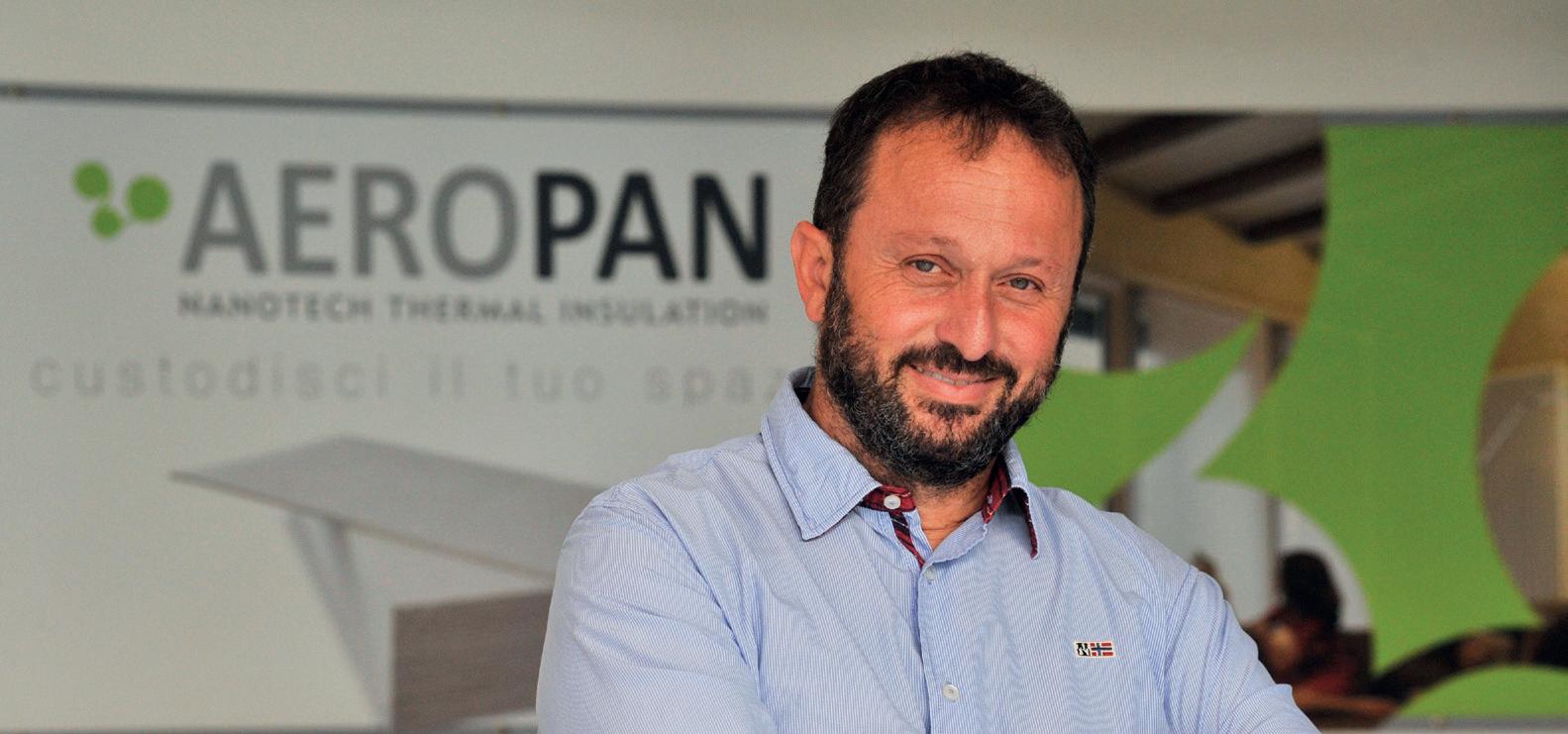
Marco Corradini
Investments in growth
Alongside its North American project, the company is investing strongly in growing its RV market share. The Italian plant will soon see the arrival of a sophisticated new machine for complex LWRT processing, a fully automated production line, as is normal in the automotive sector. “The new machine will be up and running in a few weeks,” says Marco Corradini. “This is a major investment in financial terms, but it is fundamental to growing our business. We want to integrate automotive methodologies ever more into our processes, and this means having the capacity to handle large production volumes, based on perfectly organised processes, as well as obtaining, as soon as possible, the automotive certifications used to standardise and improve the quality of all automotive products and services worldwide.” In the vast panorama of RV products, the campervan segment, which has grown enormously in recent years, is strategic for Ama Composites. The company can produce a large range of campervan components for installation in the panel body. For instance, it makes the interior trim panels used in the sleeping area, door cover panels (for sidehung rear doors and sliding side doors), the lower section of drop-down beds and wheel arch covers. It can also fabricate large structural elements like motorhome front mouldings and semi-integrated motorhome cowlings, using the RTM technology. Ama Composites makes the frames for pop-up campervan roofs, with RTM or foamed resin outer shells
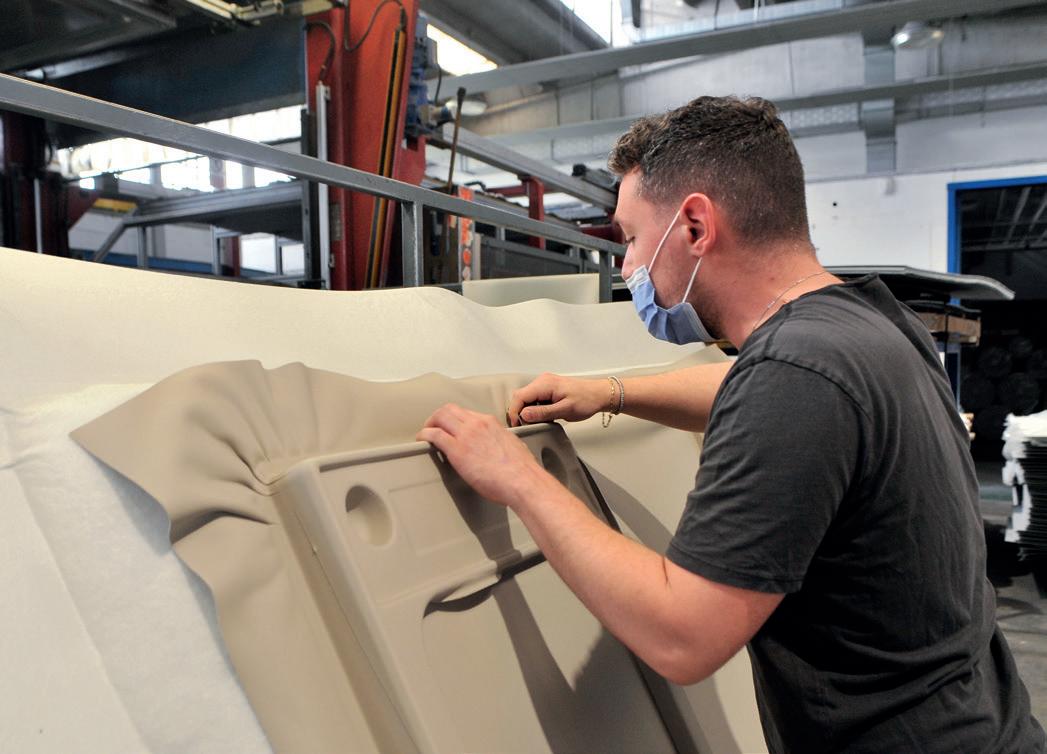
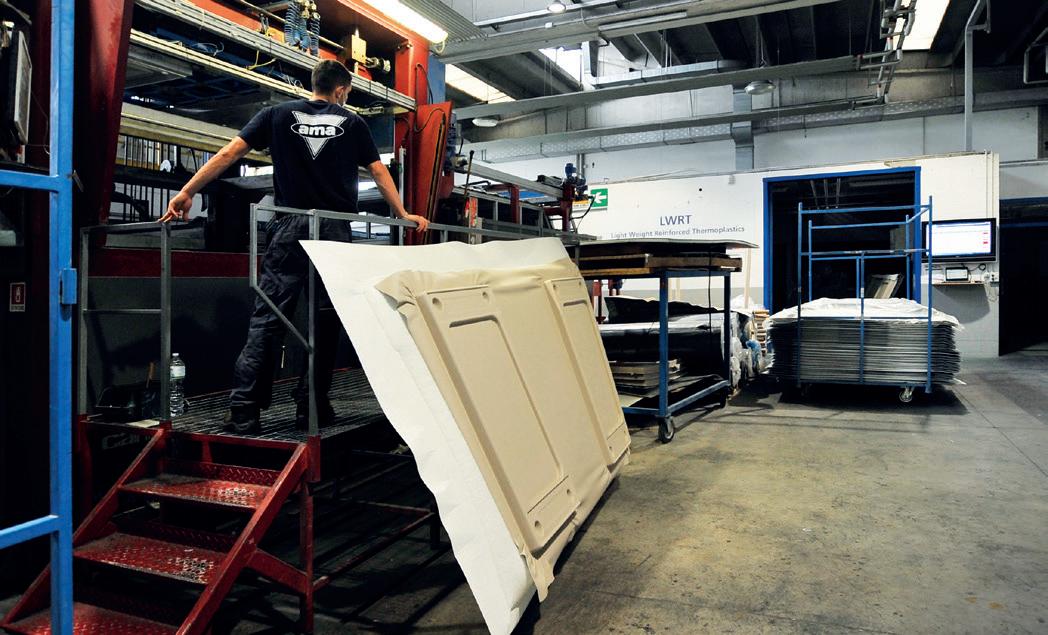
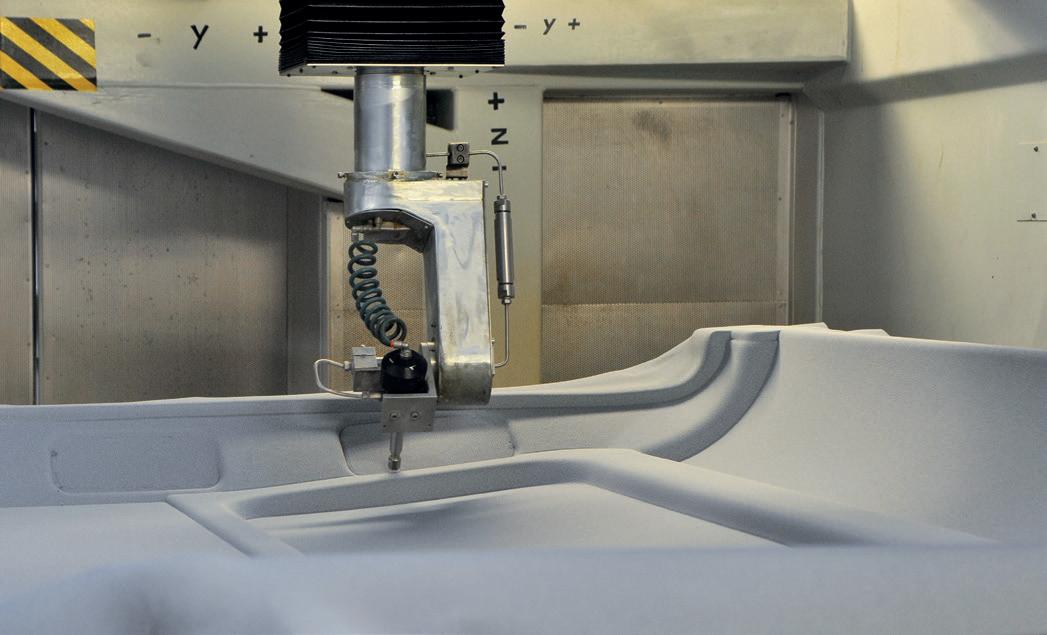
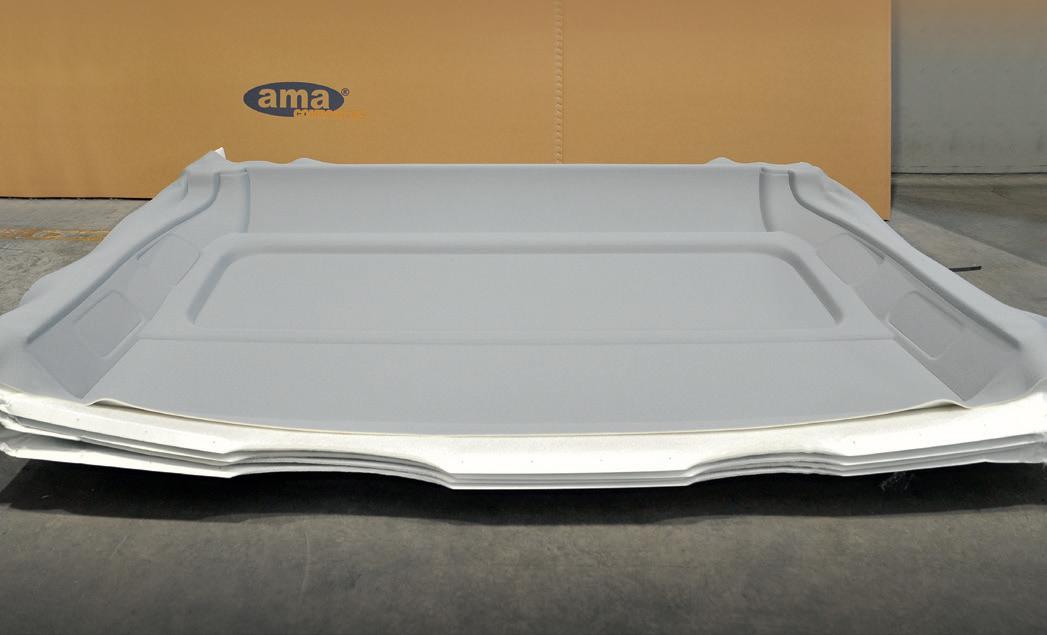
already integrated with the LWRT Plug & Play internal panelling. In all the above cases, the LWRT structure can be coupled with insulation and finish materials, thus saving the RV maker a step in the assembly process and ensuring more even production quality. As Marco Corradini says: “Structural elements made with the LWRT technology are at least five times lighter than conventional thermoformed parts, and up to ten times lighter than glass fibre mouldings. What is more, the parts are completely washable, mould-proof, and non-allergenic. We are also working together with a number of fabric, PVC and TPO manufacturers to offer our clients the widest possible range of solutions: our material, once coupled, strengthens the elements used around the interior.” It is worth noting that Ama Composites has been able to keep down production costs by using special wooden moulds, even for large parts, thus doing away with conventional aluminium moulds. This is an excellent solution for small and medium production runs, and especially useful for preliminary runs which may require modification. Once the product goes into large series production, the company can transition to metal moulds.
Insulation and heating
One of the new proposals Ama Composites is making to the RV sector is the use of super-insulation materials. The company has already used special aerogel composites in products for the building & construction industry - one of the very best modern thermal insulation materials, already also in use in the aerospace and automotive industries. “Aerogel is a super insulation material (SIM),” says Marco Corradini “as an example, 10 mm of our Aeropan material is equivalent to around 100 mm of a conventional material like rockwool or polystyrene. We have already used it in building & construction applications, but we have also starting working with isothermal vehicle makers and we can create very valid solutions for RVs. Our aerogel products can be integrated with existing construction systems, thus lowering costs.” Ama Composites has concrete proposals for using aerogel and nanotechnology to improve the thermal insulation of campervans, which are not always very highly rated for this aspect. They offer a wide range of products, with semi-rigid and flexible panels, in thicknesses from 2 to 10 mm. These materials, made with silicon dioxide nanoparticles, are rated class A2 fire resistant, and are also water repellent, since they do not absorb water. But that’s not all: Ama Composites has also created two heating systems for RVs and mobile homes. Working together with Palomar (for the RV sector), AMA Composites has developed JESS (Joule Electric Stripes System), an innovative electrically-powered floor heating solution which uses a membrane composed of a thermally conductive element coupled to one or more armatures and protected by a polyester film. The JESS radiant heat system creates a natural warmth in the interior and, since it does not work by convection and does not move the air, it does away with the circulation of dust and mites. For RV vehicles, it runs on 12V power. It has a very low electrical draw, although this also depends on the materials it is inserted into. Ama Composites’ floor heating system stands out from competing solutions because it is integrated directly into the vehicle and offers outstanding performance. Healthier and quieter than air heating solutions, it can still be combined with the air heating systems normally used on RVs. Ama Composites also offers an infrared heating system, called AMATHERM: a conductive fabric – available in standard fabric widths with a variety of electrical specifications – acts as a heating element to provide diffuse uniform heating over large surfaces. It is composed of a continuous conductive metal wire and glass filaments with a continuous, untextured yarn. It can be used in a vast range of applications, from 12 to 400V and, while maintaining its electrical isolation, can resist temperatures up to 250°C. The stand out feature of the product is that, since it is a fabric, it can be used as a component in composite materials, or in sectors like the automotive, windpower and aeronautics industries, as well as in heating RV cabs and sleeping areas. In general, it can be used in all defreezing applications and in thin film resistance applications (around 1 mm thick). The AMATHERM radiant heating technology acts quickly to heat only the target areas without having to heat the entire interior. The system can be installed in various areas of the interior, on the floor, on the walls and on the ceiling.










